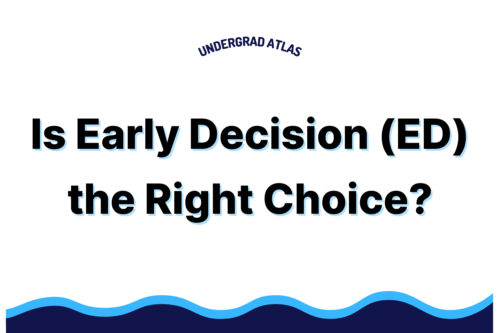College application processes can be overwhelming, especially when faced with the various acronyms associated with different admission options. You may have come across terms like ED, EA, SCEA, and REA, and wondered what they mean and how they impact your college journey.
In this article, we will demystify these terms and help you understand the key differences between ED I, ED II, SCEA, REA, and EA. So, let’s dive right in!
1. Early Decision (ED) and Early Action (EA)
Early Decision (ED) and Early Action (EA) are popular application options that offer students the chance to submit their applications before regular admission deadlines. Here’s what you need to know about each:
- Early Decision (ED):
ED is a binding agreement between the student and the college. If you are accepted to a college through ED, you are obligated to attend that college. It’s important to carefully consider this option, as you will be withdrawing your applications from other colleges if admitted through ED. However, if the financial aid offered is insufficient, you may be released from this commitment.
- Early Action (EA):
EA is a non-binding option that allows you to apply to multiple colleges early in the admission cycle. If accepted, you are not required to attend the college. This gives you the flexibility to explore other offers and compare financial aid packages. Applying early through EA shows your enthusiasm and initiative, which can be advantageous in the highly competitive college admissions process.
2. Single Choice Early Action (SCEA) and Restrictive Early Action (REA)
Single Choice Early Action (SCEA) and Restrictive Early Action (REA) are specific variations of Early Action. Let’s take a closer look at what they mean:
- Single Choice Early Action (SCEA):
SCEA is a restrictive form of Early Action where you can apply early to only one college. If you choose to apply to a college through SCEA, you must not apply early to any other college. However, there may be exceptions to this rule for some colleges, such as allowing simultaneous applications to their institution through SCEA and public schools through Early Action. It’s crucial to familiarize yourself with the specific policies of each college you are considering.
- Restrictive Early Action (REA):
REA, also known as Single-Choice or Restrictive Early Action, is essentially the same as SCEA. It offers students the opportunity to apply early to a single college without a binding commitment. Just like SCEA, if you opt for REA, you cannot apply early to any other college through EA, ED, or REA. Ensure you review the guidelines set by each college to avoid any misunderstandings.
3. Which Option Should You Choose?
Deciding which application option is best for you depends on your individual circumstances and college preferences. The following factors may influence your decision:
- Commitment: If you’re confident about your first-choice college and ready to commit, Early Decision might be the right choice for you. However, it’s crucial to consider the financial implications and ensure the college aligns with your long-term goals.
- Flexibility: If you prefer the ability to compare offers and keep your options open, Early Action provides the necessary flexibility. You can apply to multiple colleges without the binding commitment, giving you more time to make an informed decision.
- Specific College Policies: Some colleges offer unique variations of Early Action, like SCEA. Ensure you understand the policies of each college you’re applying to, as exceptions may exist.
4. Application Timing for Different Admission Options
It’s important to note that application timing plays a significant role depending on the admission option you choose. While applying early can improve your chances of acceptance in rolling admission schools, it does not impact your application outcome for other options like regular decision or ED II.
Regardless of the route you choose, always aim to submit your application well before the deadline to avoid any last-minute complications.
Also check out: CommonApp 2023-2024: When Does It Open and What You Need to Know
Conclusion
Understanding the various college admission options is crucial when navigating the application process. Knowing the differences between Early Decision (ED), Early Action (EA), Single Choice Early Action (SCEA), and Restrictive Early Action (REA) empowers you to make informed decisions and maximize your chances of success.
Remember to carefully consider your commitment level, desired flexibility, and the specific policies of each college before finalizing your application strategy. Good luck on your college journey!




